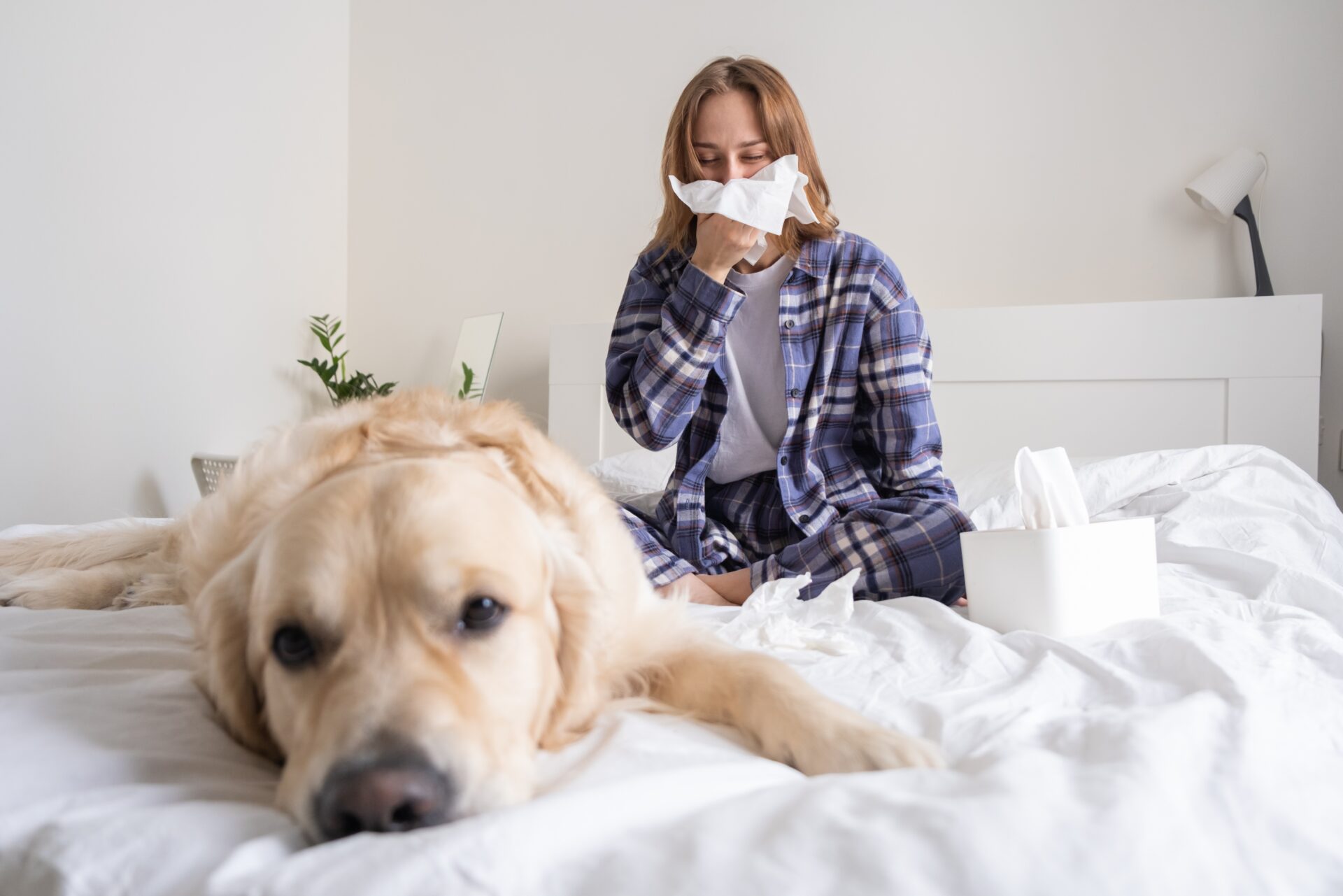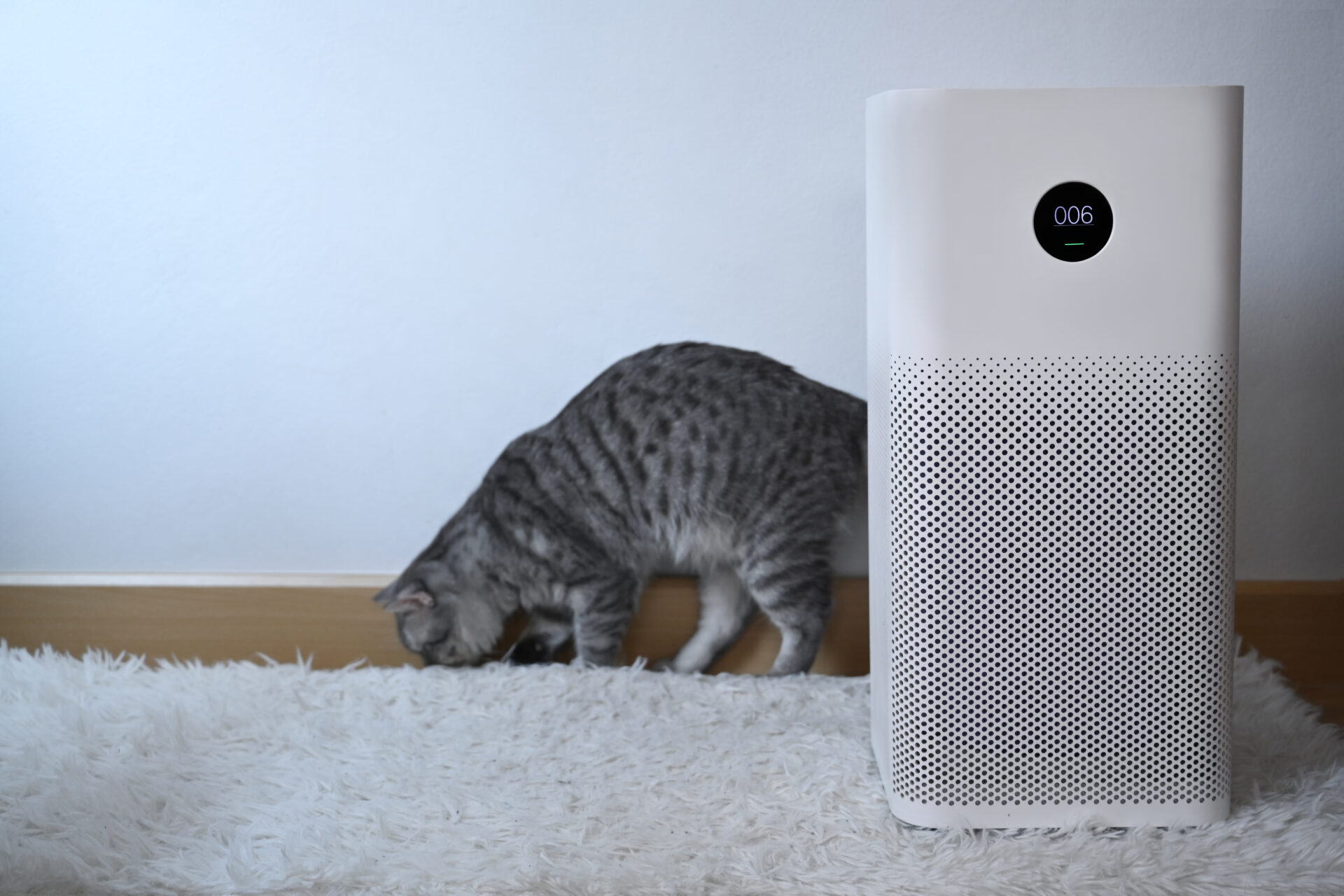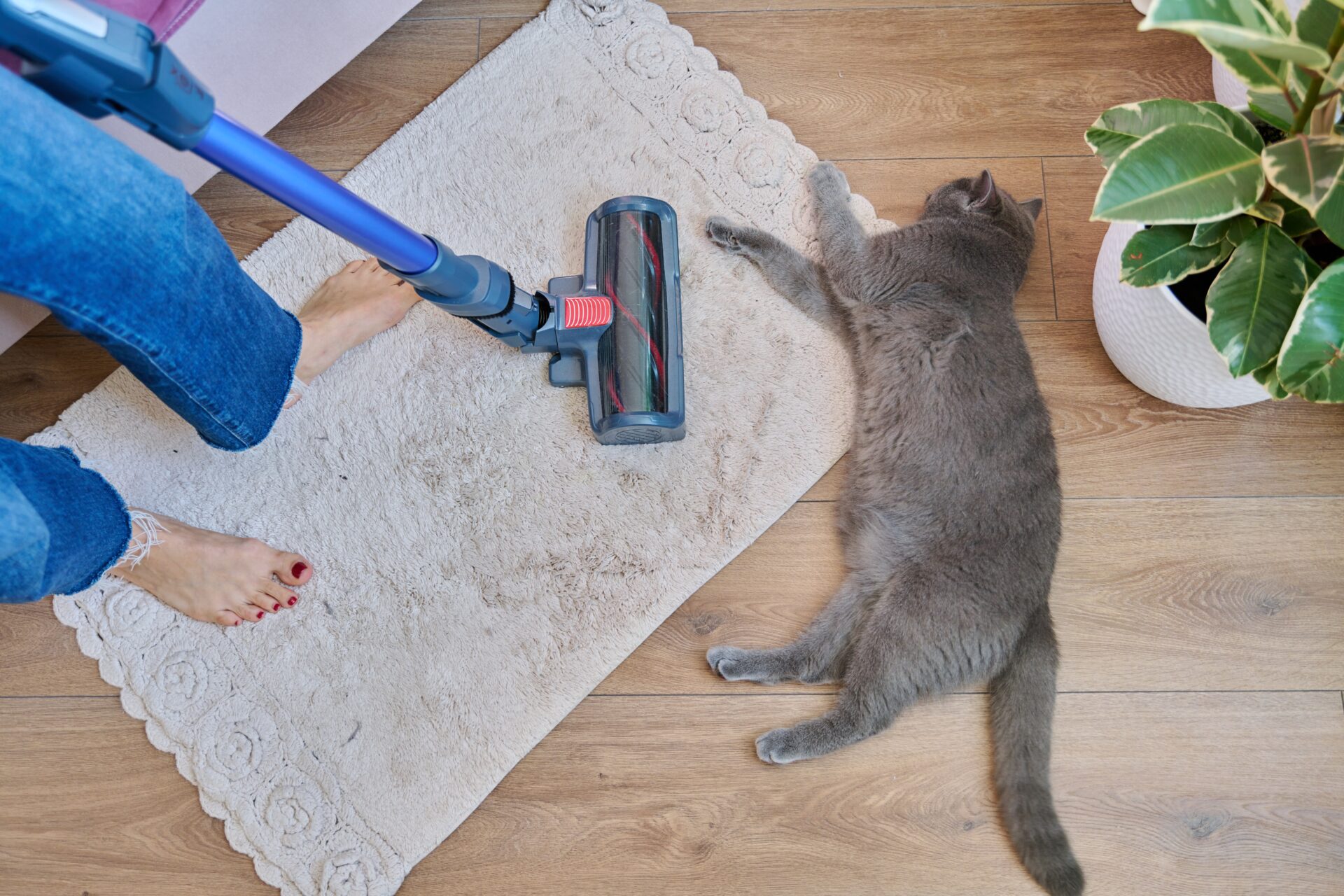Navigating Pet Allergies: Air Purifiers & More
Navigating Pet Allergies: Air Purifiers & More
Allergies are no fun, especially when they are being perpetrated by your own fuzzy friend. Living happy and healthy with pet allergies will likely require a multi-pronged approach. Keep reading for some clarity on the causes of pet allergy, hypoallergenic breeds that might harmonize with your allergies, how to arm yourself with the right info, and our best pet allergy hacks.
What Is Pet Dander?
What you’re most likely allergic to isn’t an animal’s fur itself, but the pet dander the fur carries. Pet dander is primarily skin flakes that have been shed, combined with other pet output from feces, saliva, urine etc…
Despite the common misconception, no dog or cat breed is 100% hypoallergenic.

Dogs are typically considered hypoallergenic due to being either hairless, no-shed, or low-shed. This is because shed fur is the vessel that transports pet dander around your house and up your nose. Check out Pep & Pup’s article on Hypoallergenic Dog: 10 Breeds That Don’t Shed for a list of common breed picks for those suffering pet allergies.
Pet dander is an issue for kitties as well, but the protein Fel d 1 that is found in cat saliva is also a big perpetrator. Here is a non-exhaustive list of hypoallergenic cat breeds that might suit you:
- Javanese
- Cornish Rex
- Devon Rex
- Sphynx
- Balinese
- Russian Blue
- Bengal
- Colourpoint Shorthair
Two Test Prep
Below are two tests that will be critical in identifying your personal sensitivities. Completing these tests before bringing your furchild home will empower you with information upfront and hopefully prevent heartbreak later.

Test #1: Allergy Component Test
Take an allergy component test with the help of your doctor to pinpoint the exact causes of your symptoms. It’s possible pet allergies are only a fraction of your condition, and dust or pollen are actually the main offenders. If you and your designated health professional find dog and cat allergies to be the leading cause, an allergy test may be able to break the results down to a molecular level and deliver you unexpected information. For example, some people only take issue with a dog protein called Can f 5, produced by male dogs. A percentage of people with Can f 5 sensitivities will be able to coexist allergy-free with a female dog or a male dog who has been neutered.

Test #2: Touch Interaction Test
Nothing substitutes for the real thing. Direct interaction with the dogs or cats you are interested in taking seems obvious, but cannot be overstated. Some folks may find certain breeds cause major flare-ups, while others don’t. Spend lots of time petting your prospective pet and monitor your symptoms and their severity.
Hacks To Reduce Pet Allergies
Air Purifier
Strongly consider an air purifier, a great way to passively remove pet dander and other allergens from your home all day and night without having to lift a finger. Make sure to use a HEPA filter to effectively remove airborne particles. If you suffer from multiple allergy triggers such as pollen and dust, an air purifier will aid in reducing them as well.

For an option that won’t break the bank, we recommend the Medify MA -14 Air Purifier for (at time of publication) $119.99 CAD. It utilizes a HEPA filter, is ‘virtually silent’, and claims to clean a 400 sq ft space in an hour. Take a look at the positive reviews and decide if a mini air purifier like the above or similar would be right for your home.
Clean Up
Vacuuming surfaces regularly, especially using a vacuum fit with a HEPA filter, will keep pet dander on the low. If in contact with your pet, clean sheets and blankets often. Take care to wash your hands before you touch your face after playing with your animal.
Reduce Dander Hiding Spots
Reduce fabric surfaces in your home. We don’t mean to say toss out all your bedding and your decorative pillows, but minimizing materials that collect and store pet dander will help you lessen your contact. Consider moving the plush rug out of the living room, or switching to blinds instead of curtains.

Achoo!
Bless you. Taking on an animal when you have pet allergies will require some sacrifices, but it can definitely be done! Before you take on the task, make sure to get tested to identify your individualized allergy triggers, and spend some one-on-one time with your pet-to-be. However, in the unlikely case your allergies are very severe and resistant to medications or routine cleaning and preventative measures, you might need to accept a difficult reality. Buying or adopting an animal only to surrender them to a shelter when you realize the symptoms are not manageable is really hard on you and your pet. It is better to know the limits of your allergies and forgo dog or cat ownership than burden yourself and an animal with that heartbreak.


Leave a comment